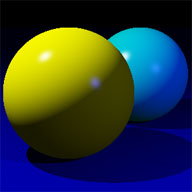Specularity

Specularity is the visual appearance of specular reflections.
In computer graphics, it means the quantity used in three-dimensional (3D) rendering which represents the amount of reflectivity a surface has. It is a key component in determining the brightness of specular highlights, along with shininess to determine the size of the highlights.
It is frequently used in real-time computer graphics and ray tracing, where the mirror-like specular reflection of light from other surfaces is often ignored (due to the more intensive computations required to calculate it), and the specular reflection of light directly from point light sources is modelled as specular highlights.
Specular maps
A materials system may allow specularly may vary across a surface, controlled by additional layers of texture maps.
In seismology
In the context of seismic migration, specularity is defined as the cosine of the angle made by the surface normal vector and the angle bisector of the angle defined by the directions of the incident and diffracted rays.[1] For a purely specular seismic event the value of specularity should be equal to unity, as the angle between the surface normal vector and the angle bisector should be zero, according to Snell's Law. For a diffractive seismic event, the specularity can be sub-unitary. During the seismic migration, one can filter each seismic event according to the value of specularity, in order to enhance the contribution of diffractions in the seismic image. Alternatively, the events can be separated in different sub-images according to the value of specularity to produce a specularity gather.[2]
See also
References
- ^ Moser, T.J.; Howard, C.B. (2008). "Diffraction imaging in depth". Geophysical Prospecting. Vol. 56, no. 5. pp. 627–641. doi:10.1111/j.1365-2478.2007.00718.x.
- ^ Sturzu, I.; et al. (2013). "Specularity Gathers for Diffraction Imaging". 75th EAGE Conference & Exhibition incorporating SPE EUROPEC. doi:10.3997/2214-4609.20130700.
